Radish is a tasty and useful plant that grows many gardens around the world. Numerous sources indicate that every third owner of the country area is happy to plant radishes, counting on a large and tasty harvest. It is safe to say that radishes is an excellent source of vitamins, which is already early in spring can please with his ripeness. Many owners note that they made a choice in favor of radish due to its antimicrobial properties.
To begin with, it is worth saying that radishes are attributed to the family of cruciferous, just like cabbage. An annual varieties (so-called European) are most popular, which give root, as well as seeds, already in the first year of planting. Do not forget about two-year-old radish, which has a root of the hosts in the first year after landing, and the seeds appear already on the second. In this material, we will analyze the first option, as in the CIS of the CIS, the biennial is extremely rare.
It can only be noted that almost all the owners who are constantly growing radish, put this fruit in one row with tomatoes, cucumbers, as well as other vegetables for which many people are engaged in garden affairs. This suggests that radish is an indispensable plant that can be used in many dishes.
In this material, we will pass in detail around the question of landing and growing radish. In addition, we will not bypass the very details related to the departure of the radishes in order to ultimately get a beautiful and delicious fruit.
Features of Radree
It must be remembered that the radish roots are often rounded, however, there are often flat and cylindrical forms. As for the color of this vegetable, it is red, pink, purple and white colors. All this depends on the method of planting, existing conditions and seeds that have been used. Most often, the owners do not particularly pay attention to the appearance of rooteplood, since the main aspect is its size. Always want a major harvest that would allow to rejoice in radish for a long time.
If you speak directly about the use of radish, then there is a colossal number of dishes in which this fetus takes decent places.
Many people adore radishes because of a pleasant acute taste, which no other vegetable boasts. Thus, there are practically no alternative among the amateurs of radishes, so the owners should ideally explore the specifics of landing of radishes in order to ultimately get delicious and juicy fruits.
Landing radish
- As we said, Radish is an early culture, which the owners enjoy at the beginning of spring. Accordingly, with the help of radish you can fight by vitaminosis, which is in the spring period it is a serious problem for many people. Radisa roots have p, b, pp vitamins. In addition, radishes contains ascorbic acid, proteins, sugar, amino acids, phosphorus, iron and much more. All this is required to each person who, after the protracted winter period, requires "to charge" your body.
- I would like to say that Especially often radish is found in the CIS, since it is within the framework of this territory there are the most comfortable conditions for growing root. Thus, almost any private territory is best suitable for landing radish, and in any volumes.
- As already mentioned, radishes matures extremely quickly. Gardeners indicate that this very period often lasts up to 35 days for round varieties, as well as up to 40 days for long varieties. The first grade is the most common.
- As for the landing time, there is several periods at once: 3-4 times - in the spring, as well as in the second half of summer. If we are talking about the northern and central regions, it is best to land at the end of July and until mid-August. In the southern regions, radishes can be seated until the end of September. Accordingly, we have a fairly wide time range, which will definitely have to taste to many gardeners. First of all, it is necessary to pay attention to the region where landing will occur, and after that, to make some conclusions.
- It should be remembered that there are often seeding in hot summer weather. The thing is that radishes extremely badly tolerates heat, and ultimately the fruit becomes bitter and solid - already unsuitable for use in food.
- Directly landing seeds should be done on smooth surfaces, or even on special sites that are equipped slightly below the soil level. This option is successful due to better retention of atmospheric precipitation. Accordingly, the crop will be the best than under other conditions.
- It is also interesting that radishes are canceled on sites designed for tomatoes. Accordingly, if there is a free place, it makes sense to land there. In addition, you can sow radishes almost every week somewhere until May 20, and it will be possible to gradually collect a harvest, and on the empty places to prepare the ground to plant the following culture.
- As for the seeds themselves, often the owners make a decision to acquire them in various outlets. However, if possible, you can use your seeds, if any. To get the right seeds yourself, it is necessary to plant a particular variety (here it is important to pay attention to the fact that the hybrids of this plant will not suit for further cultivation). Immediately after the root plant was formed, it is necessary to cut the leaves, while leaving 3-4 cm plants. After a certain time, radishes will give a bloomon, and it is on it that seeds will be tuned. After the pods are wishes, they need to be assembled, and then - leave for ripening. After drying, they can be mounted with hands and separate the very cherished seeds. Ultimately, the seeds will be very much, and they can be safely applied to landing. It is also interesting that it is not recommended to take seeds from plants that have not formed rooteplood, but just began to bloom.
- Digging takes place at a distance of about 10 cm. For 1 square meter of the site, about 2-3 g of seeds can be sown. They need to fall asleep the earth, and this layer is up to 2 cm. If the seeds are deeper than the above value, then the root plant can simply not get involved. We should say a few words about the ratio of seed weight to their number. It is known that one thousand seeds is approximately 8-10 g. It is interesting that the germination of seeds is often preserved for about 5 years. You can safely sow radish in mid-April. This is exactly the time when you can start active work within the garden.
- In order for the seeds to be pleased with active ascent, the soil should be predetermined. Do not forget that during the period when the leaves appear in sproured shoots, it is advisable to proper, and also leave the distance between them in 2-3 cm. Experts advise landing on one seed, since during thinning it is possible to damage the root of the main plant.
Process of growing radish
As you know, the care of radish is a serious question that often requires a multitude of reflection. First of all, it should be borne in mind that it is often thinning, a weed regiment, soil looser, as well as watering radish and pest protection. It should be understood that without proper care, the plant can please with active growth, as well as large root roots. However, with high-quality care, it is guaranteed to get a good product. Therefore, thinning implies the removal of excess plants. As we mentioned earlier, this is an important process to follow.
- The soil looser also allows radish to develop faster and gain major sizes. This process is carried out approximately 1 times within 5 days. You can do without it, however, again, here we are talking about what root crusts we get in the end.
- Watering plants is a question, relevant for almost all cultures. Moreover, it is often about abundant irrigation, which is conducted extremely often. In the case of radishes, the situation is approximately the same. It is worth understanding that in those days when the air temperature is too high, and there is a certain drought, an abundant watering should be made. We can visually determine whether there are plants in watering, or not. If there are constant rains, radishes can be actively developing and without assistance.
- Among other things, Radish is also a light-affiliated plant. It is also interesting that the seeds begin to germinate when the temperature is up to +3 degrees Celsius. The sprouts of the radish can easily endure freezing, but only if the temperature does not fall below -3 degrees. If we speak exclusively about adult plants, then they can easily withstand cooling up to -6 degrees, but in some situations you can lose the fruit at all. In the most common conditions, radishes feels as comfortable as possible when the air temperature is about 17 degrees Celsius. Of course, small differences are not reflected in the state of vegetation.
- In the event that we are talking about a long-term drought, it should be done by watering the Redisa two glad per day - in the early morning and evening. With this situation, the plant will be different with large and juicy fruits. It is worth saying that not everyone has the opportunity to visit your site every day, so you need to make watering only when it is possible. It is likely that with this defold radishes will grow large. Experts note that with too hot weather radisis can exist without moisture about three hours, and this time is enough for the plant to develop incorrectly. At the same time, it is not necessary to think that too active watering always goes in favor of radish. Practice shows that due to irrigation with an excess, the fruit cracks.
- A few words must be said about the soil on the basis of which radish can grow. Earlier, we talked about the fact that this root is not demanding of the soil, but this plant is demonstrating its potential on loose soil, which has a variety of organic substances, as well as with a weakly acidic response. Radish shows bad growth in cold and light sampling soils. However, with such a situation, it is possible to use humus, and the soil will become a good basis for radish.
- Specialists note the information that fresh manure into the soil is absolutely impossible. With this defrost, the radish will become the hollow inside. Thus, the radishes need to use a recreable organic. In the event that the plant will need nitrogen, it can be noted on poorly formed tops and root. In addition, with a lack of nitrogen, the leaves acquire a yellowish color. With this situation, experts recommend using complex fertilizers, which are distinguished by an increased nitrogen content. Often radish lacks potassium, and with such a layout the leaves look quite normal. However, it is worth paying attention to the root plant, since with the lack of potassium it is not tied. Obviously, with such a situation, potash fertilizers are required. To date, you can find a huge number of different fertilizers, and for each plant culture there are products of products. However, it is not worth spending too large money on such events, as it may not pay off at all.
- Separately, I would like to say that radishes in the best way interacts with many plants. Experts argue that the best radishes demonstrates growth, if you can sit next to Kerwel and the Construction.
Common varieties of radish
For those people who still do not know which variety to choose for landing should be analyzed by several of the most common options. As we have already said, there are early, secondary, as well as late varieties. It is necessary to determine in advance what exactly is needed for a particular site and conditions, and after that, to acquire seeds.
- Camelot. This is an early variety of radish, who has a period of vegetation of only 22 days. Kornemplod has a rounded-flat shape, red color, as well as a mass - to grow radish Camelot, and in the open ground, and in greenhouses. The flesh in this radish is soft, oily, and also dense. Long remains in its original form, so it is excellent for storage.
- Lanquet. It is also a raven variety that has a gentle, and even a little watery flesh. Despite this, this variety of radishes is almost never distinguished by looseness. The strength of this variety is the possibility of growing fruits throughout the garden season.
- Okhotsky. This variety is also early, and it is often planted in greenhouses. Eat this radish can be used approximately 30 days after landing. Roots have light red color, as well as rounded shape. The diameter of the fetus is approximately 3 cm. The flesh of radish gentle, juicy, and also has a pinkish shade. The good news is that the Okhotsk radishes is distinguished by persistence to cracking. With 1 square meter of the square, you can collect up to 3 kg of root.
- Chupa Chups. This early grade has recently received a considerable prevalence. Gardeners note that such radishes like children (the name of the variety is also talking about it), since the flesh's flesh has a gentle and unique taste. You can hang out this radish from April to May with an interval of 10 days. An uniquely important feature of the chup-chups variety can be called large roots, the diameter of which often exceeds 3 cm. The yield here is about the same as in the case of the past variety.
- Red Giant. This is a midverter, which matures about the middle of the summer. This variety is characterized by major oblong root roots, and the flesh has some sick, which many gourmets appreciate. In the autumn period, it is no longer recommended to sow red giants.
- Heat. This is middle-grade is often found on the territory of CIS. It is characterized by lush, dense and slightly spicy pulp roots. It is worth paying attention to the fact that when insufficient moisture radishes can be a little loose, so clearly needs care.
- Zlata. Another middle-grade, whose roots are different yellow color. He holodnostoyky and shoots easily withstand minor frosts. It is better to land such a radish in early spring or in late summer.
- Mokhov. This is middle-grade attracts farmers high yield. In addition, the radish has excellent taste. Often Mokhov variety ripens quickly and is rarely susceptible to disease.
- Rampoush. This late-ripening varieties of radish, which practically does not form stems. The fruits of this variety are white, and fusiform. The flesh is white Rampousha, and moderately spicy taste. To put this sort can only be in the open ground.
Of course, there are many other varieties, but it should be understood that among them will be difficult to find something really original with respect to the above embodiments of radish.
Pests and diseases of radish
Unfortunately, radishes regularly exposed to various diseases, so in such matters should be treated seriously. Next we look at the main pests and diseases that can affect the state of radish.
- Blackspot. This disease often affects radish, and often we are talking about the period when the area has some dampness. Ultimately, the disease affects the pods and seeds, after which often reduces the yield. Experts advise to heat the infected seeds at a temperature of 50 degrees Celsius for half an hour. In addition, there will be excess and the solution NIUIF-1, after the use of which is necessary to carry out washing using pure water.
- Muchinistaya false mildew. This disease begins its dirty work in if radish is in the ground with poor ventilation, but with high humidity.
- Horticultural Fleas are also often inflict damage radish. The most dangerous period for the radish - is the emergence of seedlings. It was then horticultural flea beetles and begin to act. They often appear in the hot dry weather. In order to protect crops from vegetable fleas, you must perform regular watering. In addition, experts recommend pay attention to dust and ash, which can scare away pests.
- Capping fly. This pest is striking not only radishes, but also radish. It is worth noting that when planting radish, it is necessary to remove vegetable precipitation. In addition, a 0.5% solution of sodium silica can be added to the prevention. In addition, we can find a lot of other useful funds.

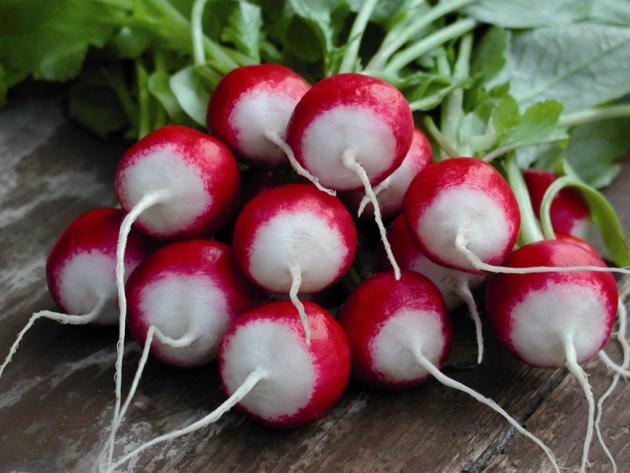
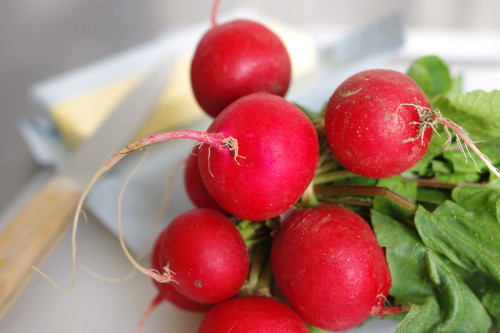
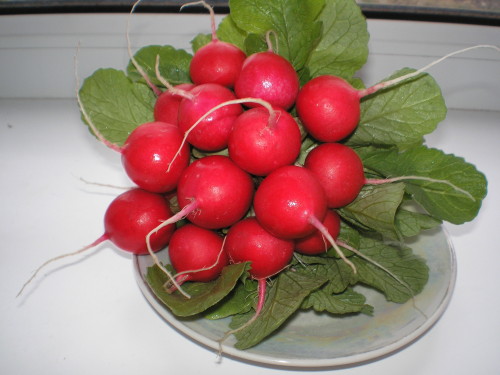
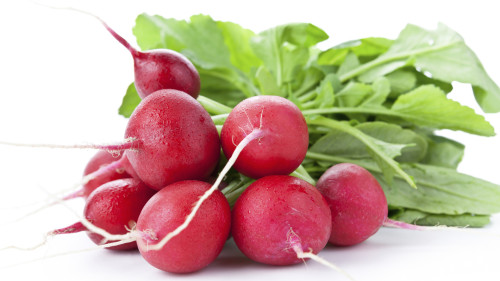
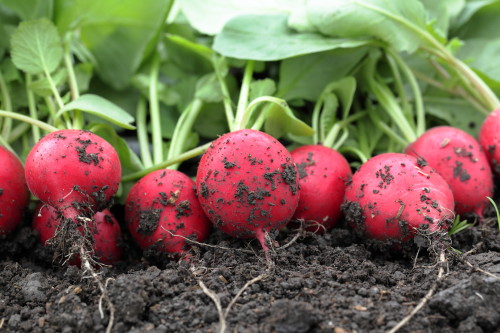
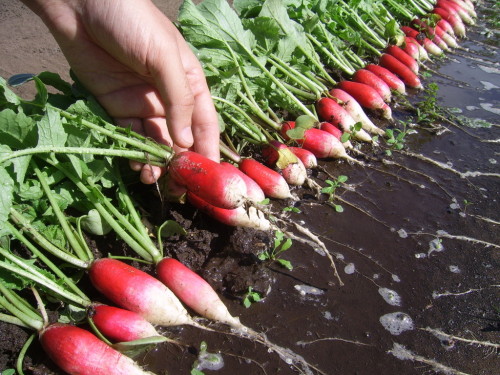












 Start a discussion ...
Start a discussion ...